Fitness Yoga is a dynamic and modern approach to the traditional practice, blending the ancient wisdom of yoga with contemporary fitness principles. It incorporates a series of dynamic asanas (postures), breathwork, and mindfulness to promote physical strength, flexibility, and overall fitness. Here are key elements of Fitness Yoga:
Regular yoga practice improves strength, flexibility, and balance. It can enhance overall physical fitness and help tone muscles. Yoga poses and sequences promote proper alignment, improve posture, and increase body awareness.
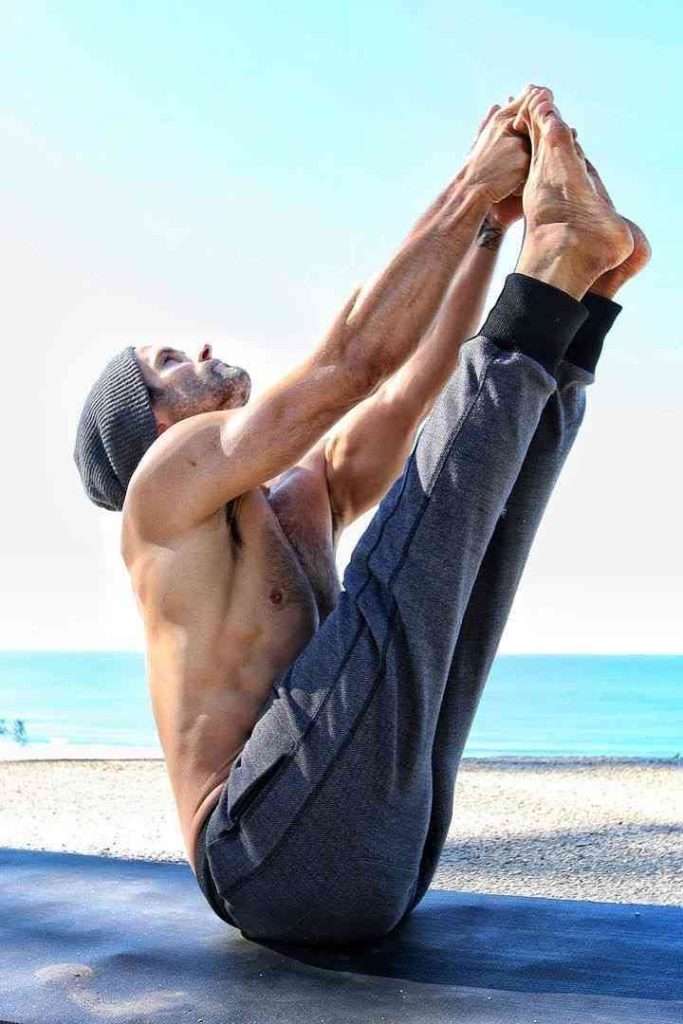
- Mental well-being: Yoga is known to improve mental health by reducing anxiety, depression, and psychological distress. It can enhance mood, boost self-esteem, and promote a sense of inner peace and well-being. The combination of movement, breath control, and meditation in yoga contributes to these positive effects.
- Heart health: Certain forms of yoga, such as Vinyasa or Power Yoga, provide cardiovascular benefits by increasing heart rate and improving circulation. This can contribute to better cardiovascular health and reduce the risk of heart disease.
- Improved focus and concentration: The focus required during yoga practice, along with breathing techniques and meditation, enhances concentration and mental clarity. Regular yoga practice can improve cognitive function and increase productivity.
- Better sleep: Yoga has been shown to improve sleep quality and help with insomnia. The relaxation techniques and stress reduction aspects of yoga can calm the mind, relax the body, and promote restful sleep.
- Enhanced immune function: Yoga practice has been linked to improved immune function, possibly due to its stress-reducing effects. Chronic stress can weaken the immune system, and yoga helps counteract this by reducing stress levels.
- Pain management: Yoga can alleviate chronic pain, such as back pain, arthritis, and migraines. Gentle movements, stretching, and strengthening exercises can reduce pain and improve overall well-being.
- Mind-body connection: Yoga emphasizes the connection between the mind, body, and breath. It cultivates self-awareness, self-acceptance, and a deeper understanding of oneself. This holistic approach fosters a sense of harmony and balance.
Flexibility and joint health
Yoga postures gently stretch and elongate the muscles, tendons, and ligaments, improving flexibility and range of motion. Regular practice can help prevent injuries, relieve muscle tension, and maintain healthy joints.
For bone and joints we have 3 yoga poses are listed below.
- Veerbhadrasana (Warrior pose)
- Dhanurasana (Bow pose)
- Ustrasana (Camel pose)
Veerbhadrasana (Warrior pose)
Veerbhadrasana is divided into three main variations: Veerbhadrasana I (Warrior Pose I), Veerbhadrasana II (Warrior Pose II), and Veerbhadrasana III (Warrior Pose III). Each variation has its unique alignment and focus, but they all embody the qualities of a warrior. In this section, we will provide an overview of Veerbhadrasana and its significance in yoga practice.
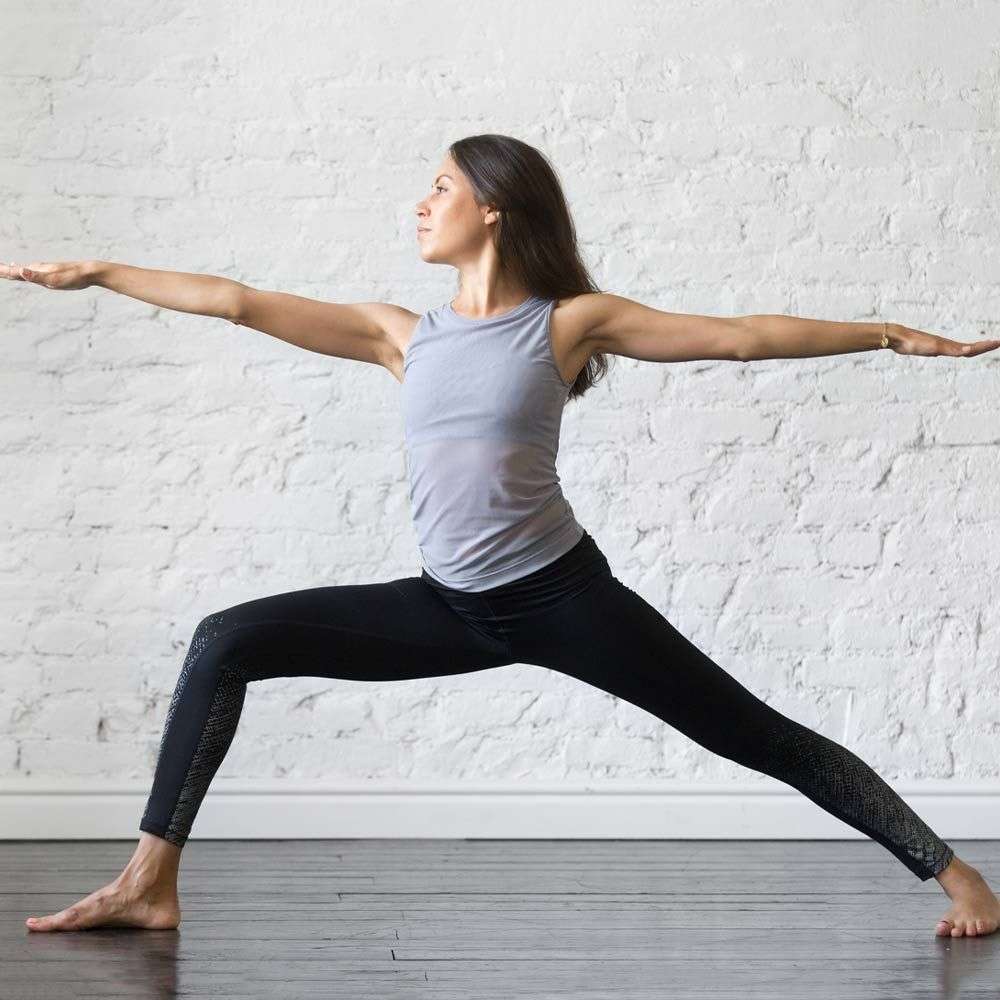
- Veerbhadrasana I (Warrior Pose I): Veerbhadrasana I is the foundational posture of the Warrior Pose series. In this section, we will explore the step-by-step instructions to perform Veerbhadrasana I correctly, including the correct alignment of the body, modifications for beginners, and variations to deepen the pose. Additionally, we will discuss the physical benefits of this pose, such as strengthening the legs, hips, and core, and improving balance and stability.
- Veerbhadrasana II (Warrior Pose II): Veerbhadrasana II is a lateral extension of the Warrior Pose series, focusing on opening the hips and expanding the body’s energy. This section will guide you through the process of executing Veerbhadrasana II accurately, including proper alignment, breath awareness, and modifications for different levels of practice. We will also explore the physical and mental advantages of this pose, such as stretching the hips and groins, toning the legs and arms, and developing focus and concentration.
- Veerbhadrasana III (Warrior Pose III): Veerbhadrasana III is an advanced variation of the Warrior Pose series that challenges balance, strength, and focus. In this section, we will break down the step-by-step instructions to perform Veerbhadrasana III, including tips for finding stability and alignment. We will also delve into the benefits of this pose, such as improving posture, building core strength, enhancing full-body coordination, and cultivating mental resilience.
Dhanurasana (Bow pose)
Dhanurasana is a dynamic backbend that combines flexibility, strength, and balance. This section will provide an overview of Dhanurasana and its significance in yoga practice. We will explore the symbolism of the bow shape, which represents the readiness and focus required to release an arrow, and how it relates to our physical and mental state during the pose.
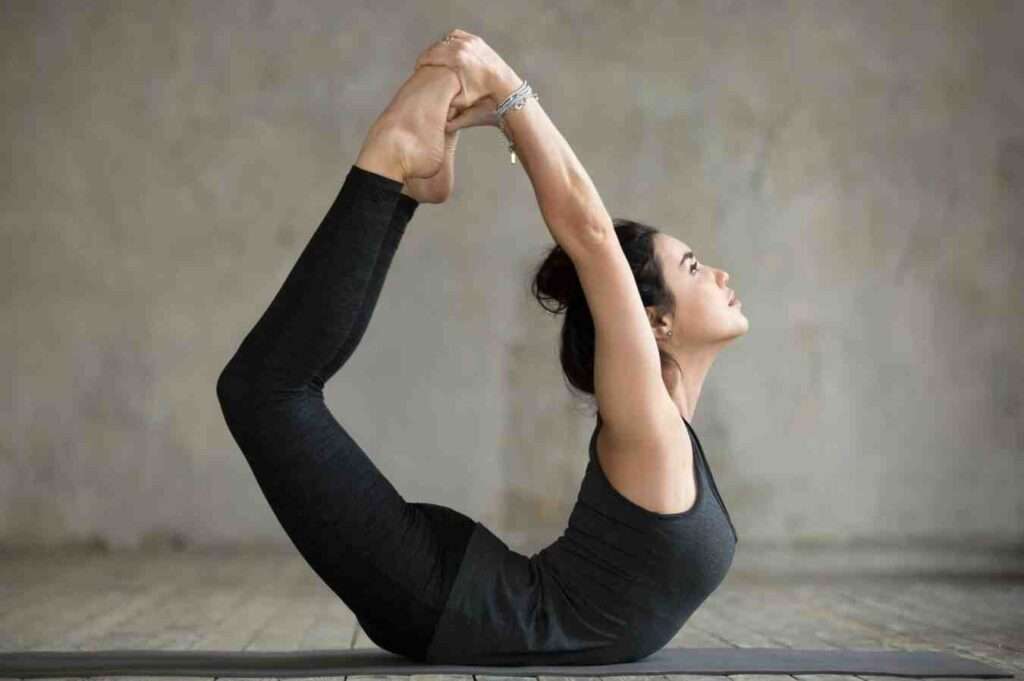
- Steps to Perform Dhanurasana: In this section, we will break down the step-by-step instructions to perform Dhanurasana correctly. We will cover the initial positioning, the gradual lifting of the chest and legs, and the engagement of the back muscles. Additionally, we will provide tips for proper alignment and modifications for individuals with different levels of flexibility.
- Variations and Modifications of Dhanurasana: Dhanurasana offers various modifications and variations that allow practitioners to adapt the pose to their individual needs and abilities. This section will explore modifications for beginners, such as using props or adjusting the intensity of the backbend. We will also discuss advanced variations of Dhanurasana that deepen the stretch and challenge balance and strength.
- Benefits of Dhanurasana: Dhanurasana provides a multitude of physical, energetic, and emotional benefits. This section will delve into the advantages of practicing Bow Pose regularly. We will discuss how Dhanurasana strengthens the back muscles, improves posture, increases spinal flexibility, massages the abdominal organs, stimulates digestion, and opens the chest and shoulders. Furthermore, we will explore the mental and emotional benefits, such as invigorating energy, boosting confidence, and reducing stress and anxiety.
Ustrasana (Camel pose)
Ustrasana is a powerful yoga posture that combines strength, flexibility, and heart-opening qualities. This section will provide an introduction to Ustrasana, its symbolism, and its significance in yoga practice. We will explore the idea of surrender and vulnerability that can be experienced when practicing Camel Pose.
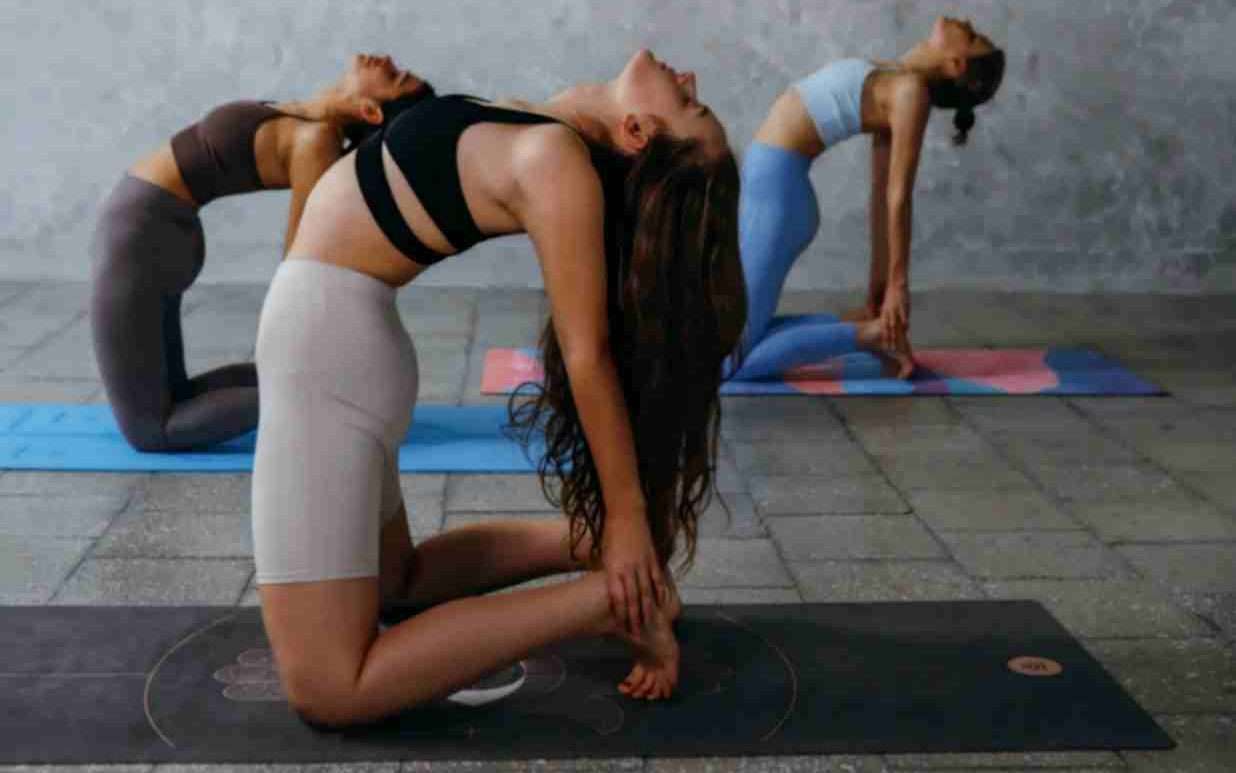
- Steps to Perform Ustrasana: In this section, we will break down the step-by-step instructions to perform Ustrasana correctly. We will cover the initial positioning, the gradual opening of the chest, and the alignment of the spine. Additionally, we will provide modifications and variations to make the pose accessible to different levels of flexibility and strength.
- Variations and Modifications of Ustrasana: Ustrasana offers variations and modifications that allow practitioners to adapt the pose according to their individual needs and capabilities. This section will explore variations such as using props or adjusting the intensity of the backbend. We will also discuss modifications for beginners or individuals with limitations, ensuring a safe and comfortable practice.
- Benefits of Ustrasana: Ustrasana provides a wide range of physical, energetic, and emotional benefits. This section will delve into the advantages of practicing Camel Pose regularly. We will discuss how Ustrasana opens the chest and shoulders, stretches the abdomen and hip flexors, improves posture, strengthens the back muscles, stimulates digestion, and increases energy flow. Furthermore, we will explore the emotional benefits, such as releasing stored emotions, promoting self-acceptance, and cultivating compassion.
Stress reduction
Yoga incorporates breathing techniques and mindfulness, which help calm the mind and reduce stress. It activates the parasympathetic nervous system, triggering the relaxation response and decreasing the production of stress hormones like cortisol.
For stress reduction we have 9 Yoga poses listed below
- Easy Pose (Sukhasana) with optional Forward Fold
- Standing Forward Fold Pose (Uttanasana)
- Child’s Pose (Balasana)
- Eagle Pose (Garudasana)
- Bridge Pose (Setu Bandha Sarvangasana)
- Extended Triangle Pose (Utthita Trikonasana)
- Cat Pose (Marjaryasana)
- Legs-up-the-wall Pose (Viparita Karani)
- Corpse Pose (Savasana)
Easy Pose (Sukhasana) Forward Fold
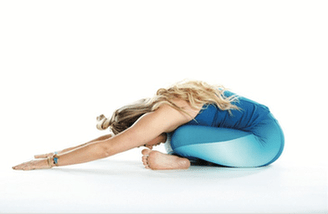
Sukhasana helps with: Easy Pose helps with the gradual strengthening of the back muscles and improves body posture.
How to do Easy Pose
- Start by sitting cross-legged on your mat, right shin/foot in the front.
- After a few minutes, slowly bend forward as far as you can, arms out in front of you. Don’t push yourself too hard.
- Stay in the forward bend for five breaths, then straighten.
- Switch legs and repeat the above steps.
Standing Forward Fold Pose (Uttanasana)
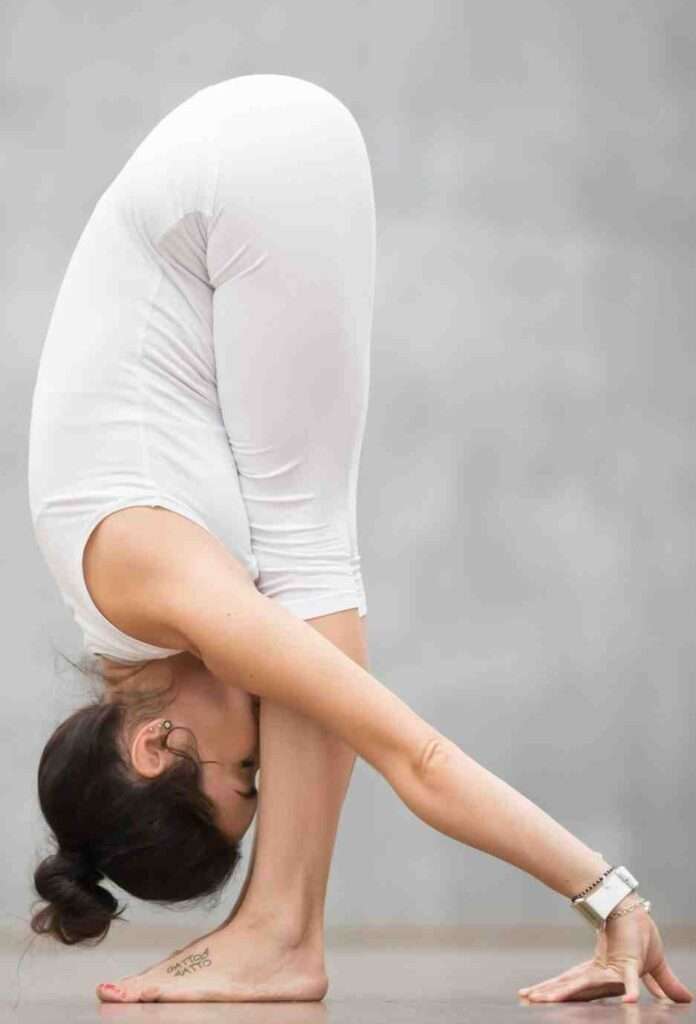
Uttanasana helps with:
Standing Forward Fold helps to reduce stress and fatigue, stimulates the liver and kidneys, and relieves headaches and insomnia.
How to do Standing Forward Fold
- From Tadasana or simply your neutral standing position, bend your knees and hinge forward from your hips, placing your hands in front of your feet. Remember to engage your core and exhale as you fold.
- Shift the weight to the balls of your feet. If your hamstrings are too tight, bend your knees slightly to prevent strain on your lower back. If you don’t have tight hamstrings, lengthen through the back of your legs. Remember to keep the weight on the balls of your feet.
- Grab hold of each elbow with opposite hands. Focus on softening your jaw, neck, around your eyes, and clearing thoughts from your mind.
- Hold the pose for five breaths, then slowly rise back up to Tadasana.
Child’s Pose (Balasana)
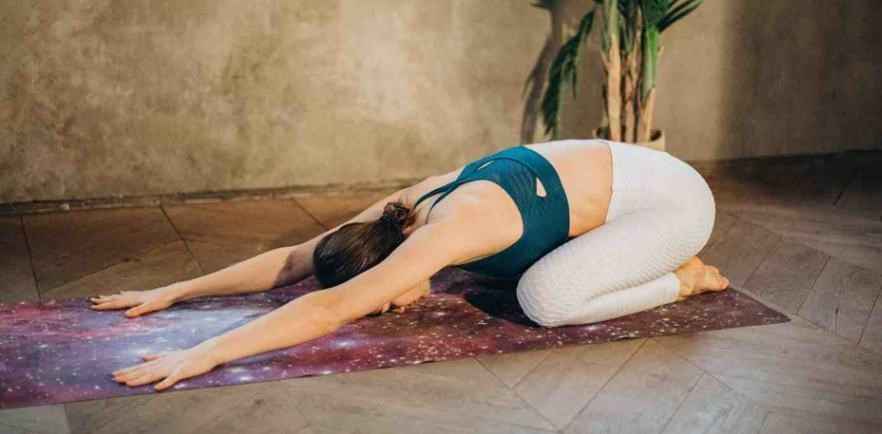
Balasana helps with:
Child’s Pose can help to reduce stress and restore the nervous and lymphatic systems.
- Start on your hands and knees, sit back over your heels with your hands in front of you.
- Slowly fold forward until your forehead rests on the mat.
- Allow your big toes to touch. You can either have your knees together or separated (it depends on how tight your hips are).
- Traditionally your arms are resting alongside your body, but you can stack your hands and rest your head on your forearms. You can also extend your arms in front of you.
- Stay in this pose for at least ten breaths.
Eagle Pose (Garudasana)
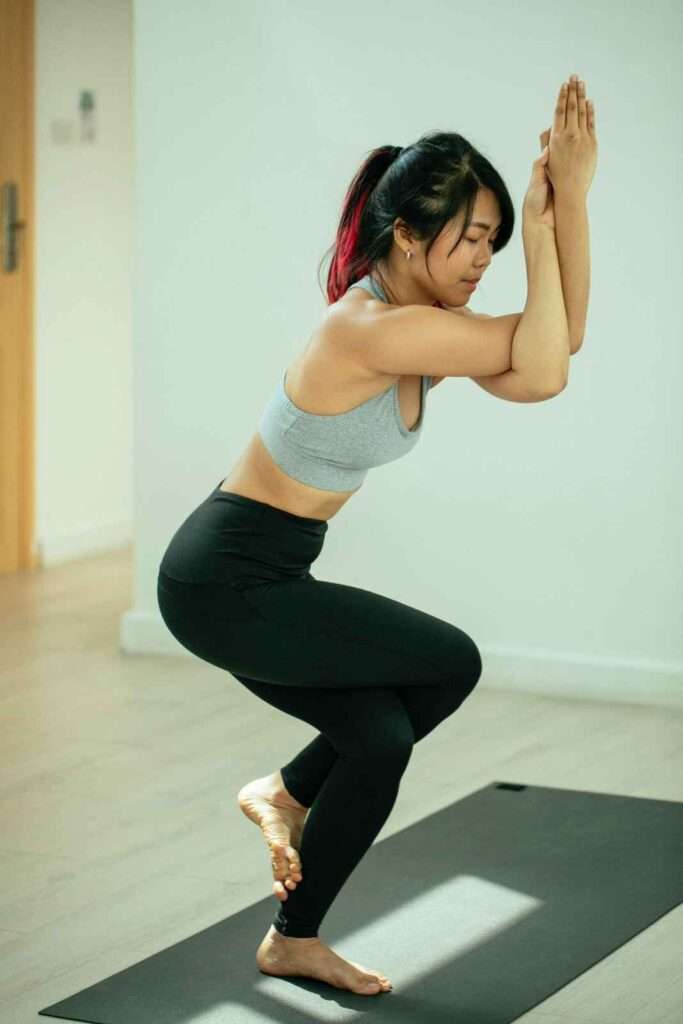
Eagle Pose stimulates the immune system and improves balance
How to do Eagle Pose
- Begin by standing upright with your arms at your side.
- Bend your knees, balance on your right foot and cross your left thigh over your right.
- Hook the top of your left foot behind your right calf.
- Extend both arms straight in front of your body, then drop your left arm under your right.
- Bend your elbows, raise your forearms at a 90-degree angle (perpendicular) to the floor. Wrap your hands and arms, finally pressing your palms together.
- Square your chest and hips to the front. Draw your belly in and up.
- Focus on the tips of your thumbs to further retain your balance.
- Try to hold the pose for one minute. Gently unwind arms and legs and repeat on the left side.
Bridge Pose (Setu Bandha Sarvangasana)
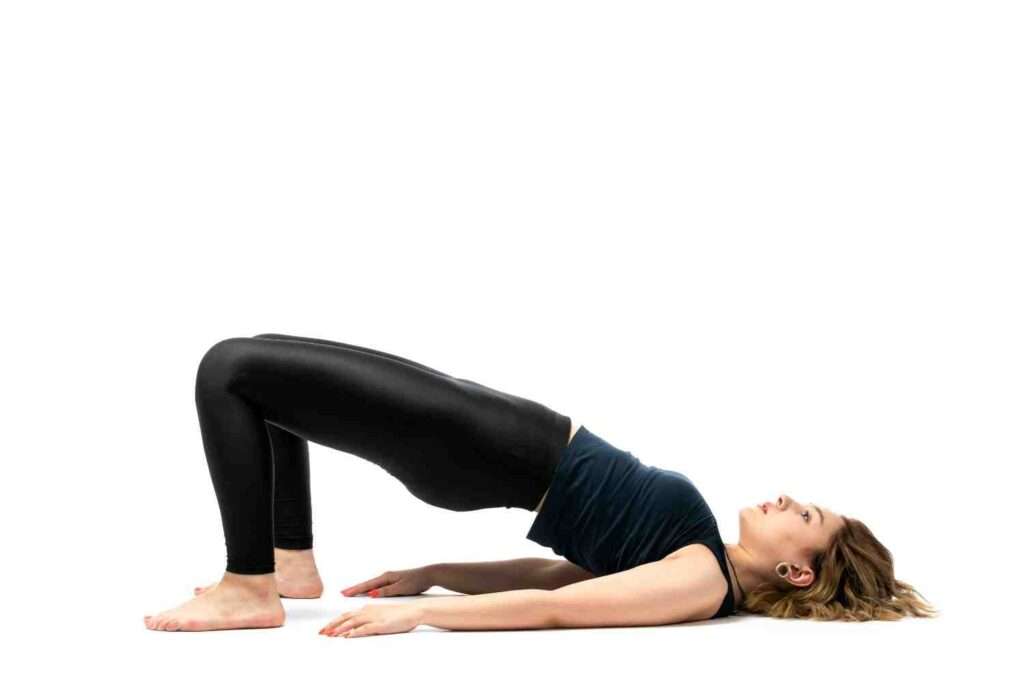
- To begin, lie on your back.
- Fold your knees and keep your feet hip distance apart on the floor, 10-12 inches from your pelvis, with knees and ankles in a straight line.
- Keep your arms beside your body, palms facing down.
- Inhaling, slowly lift your lower back, middle back and upper back off the floor; gently roll in the shoulders; touch the chest to the chin without bringing the chin down, supporting your weight with your shoulders, arms and feet. Feel your bottom firm up in this pose. Both the thighs are parallel to each other and to the floor.
- If you wish, you could interlace the fingers and push the hands on the floor to lift the torso a little more up, or you could support your back with your palms.
- Keep breathing easily.
- Hold the posture for a minute or two and exhale as you gently release this yoga pose.
Extended Triangle Pose (Utthita Trikonasana)
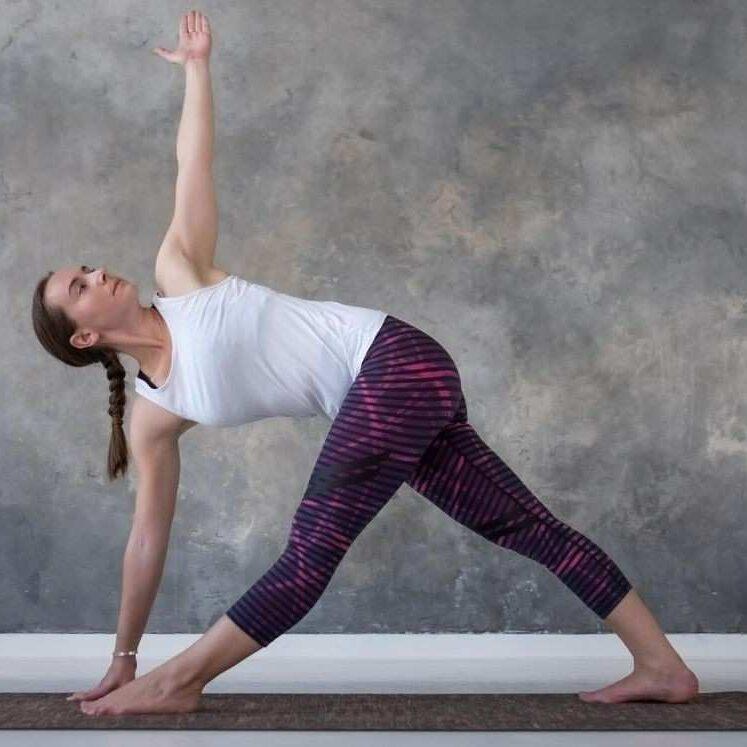
This Asana helps with
Extended Triangle Pose helps with digestion, sciatica & osteoporosis.
How to do Utthita Trikonasana Triangle Pose
- Start the pose by standing upright, exhale and spread legs one metre apart.
- Stretch your arms sideways with palms facing the ground.
- Turn your right foot out at a 90-degree angle.
- Tighten your thigh muscles and turn your right thigh outwards.
- Bend your body down from your hips toward your right leg.
- Twist your body to the left.
- Push your left hip forward (slightly) and lengthen your tailbone towards your heel.
- Put your right hand on your ankle, shin or the floor, depending on your flexibility level. Stretch your left arm straight up into the air.
- Keep your head straight and hold the position for 30 seconds.
Cat Pose (Marjaryasana)
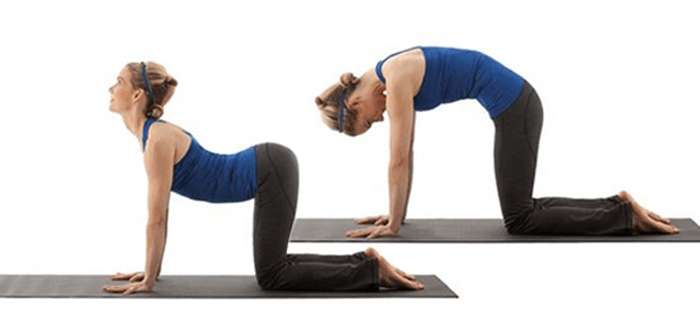
The asana flow (moving from one posture to another, seamlessly, using breath), helps relieve stress from menstrual cramps, lower back pain, and sciatica. It also massages and stimulates organs in the belly like the kidneys and adrenal glands.
How to do Cat Pose
- Start on your hands and knees, exhale while drawing your stomach into your spine.
- Round your back to the ceiling as far as possible.
- Point the crown of your head to the floor. Don’t force your chin onto your chest.
- Repeat ten times.
